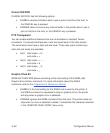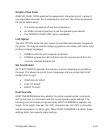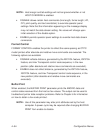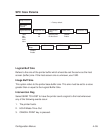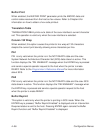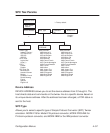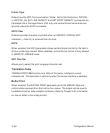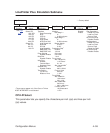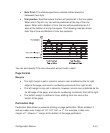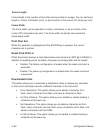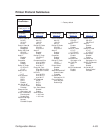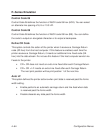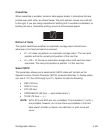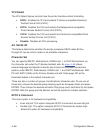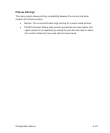4–60 Configuration Menus
Font Attributes
This submenu allows you to define the following font attributes:
• Typefaces:
Data Processing – A general purpose font printing out at 120 dpi horizontally
and 72 dpi vertically. The width of the font will vary with each cpi.
NLQ – A high quality font printing at 180 dpi horizontally and 96 dpi vertically.
This fonts has serifs and the width of the font varies with cpi.
OCR–A / OCR–B – Optical character recognition fonts printing at 120 dpi
horizontally and 144 dpi vertically. Both fonts print only at 10 cpi.
High Speed – A draft quality font printing at 120 dpi horizontally and 48 dpi
vertically. The width of the font varies with cpi.
High Speed 100 – A draft quality font printing at 100 dpi horizontally and 48 dpi
vertically. When chosen from the front panel, it defaults to 10 cpi. The cpi can
then be varied, but the width will not change.
NLQ 200 – This NLQ font prints at 200 dpi horizontally and 96 vertically. When
chosen from the front panel, it defaults to 12 cpi. The cpi can then be varied,
but the width will not change.
DP 200 – This Data Processing font prints at 200 dpi horizontally and 72
vertically. When chosen from the front panel, it defaults to 12 cpi. The cpi can
then be varied, but the width will not change.
High Speed 64 – This font prints at 120 dpi horizontally and 64 vertically. When
chosen from the front panel, it defaults to 10 cpi. The cpi can then be varied,
but the width will not change.
BARCODE 145 – This Data Processing font prints at 145 dpi horizontally and
72 vertically. When chosen from the front panel, it defaults to 12 cpi. The cpi
can then be varied, but the width will not change.
BARCODE 160 – This Data Processing font prints at 160 dpi horizontally and
72 vertically. When chosen from the front panel, it defaults to 13 cpi. The cpi
can then be varied, but the width will not change.
• Proportional Spacing: A font in which the width of a character cell
varies with the width of the character. For example, [i] takes less space
to print than [m]. Using proportional fonts generally increases the
readability of printed documents, giving text a typeset appearance.
• Bold Print: This attribute specifies text of a heavy line thickness.



